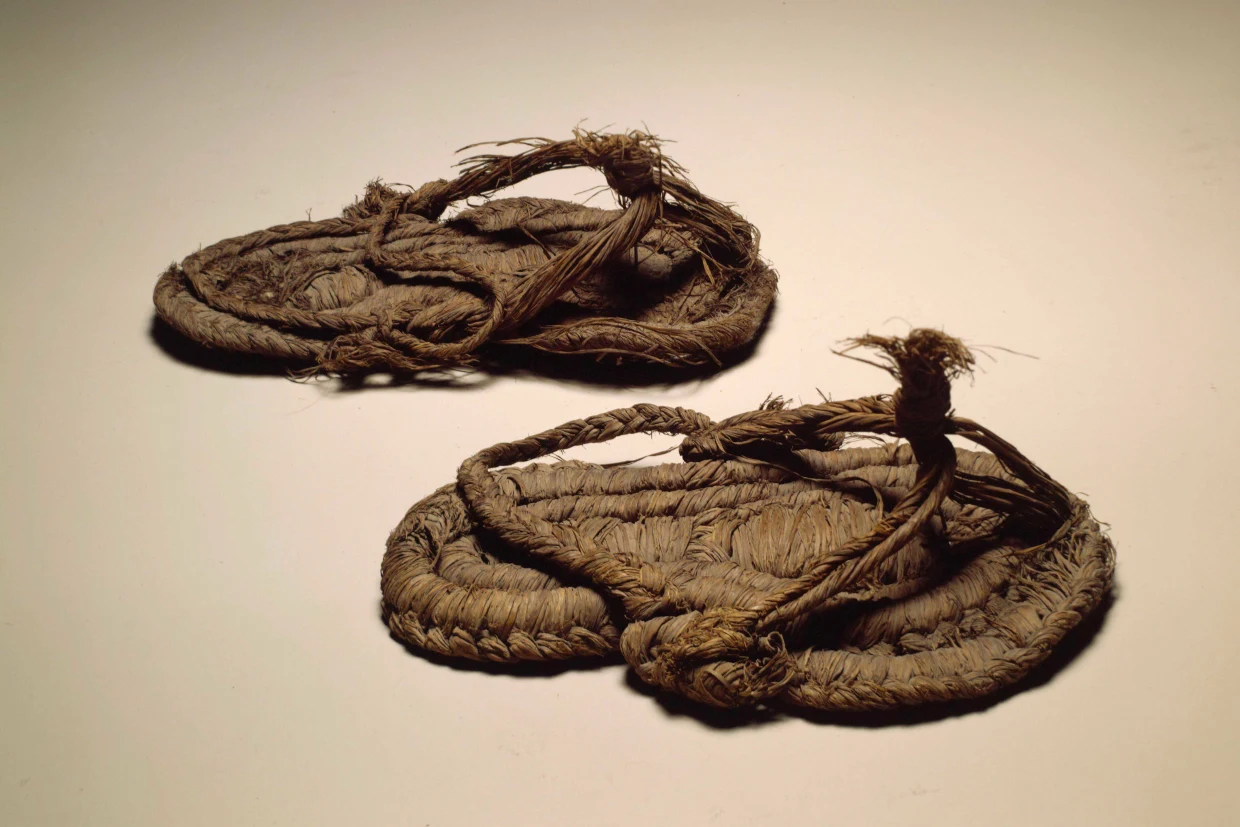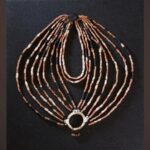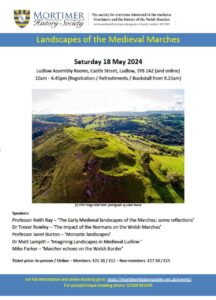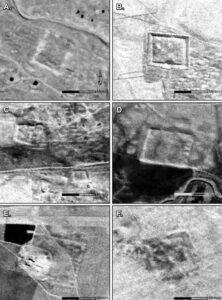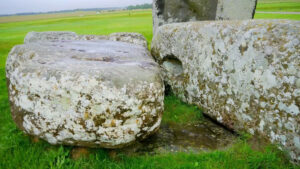The world’s oldest shoes? Sandals found in bat cave are thousands of years old, study finds
Date: September 29, 2023
Source: NBC News
Summary:
Archaeologists have stumbled upon what might be Europe’s oldest known footwear in a bat cave near Granada, Spain. The sandals, estimated to be up to 6,200 years old, were found alongside baskets and tools at a hunter-gatherer burial site in the Cueva de los Murciélagos (Cave of the Bats). Radiocarbon dating of 76 items, including 22 sandals made from esparto grass, revealed their ancient origin. The complex process of crafting these sandals involved drying the grass for 20 to 30 days, then rehydrating it for 24 hours to make it pliable. The discovery challenges previous assumptions about pre-agricultural societies in southern Europe, showcasing their technological sophistication. The cave, preserving a vast array of prehistoric artifacts due to its unique conditions, offers a rare glimpse into the life and craftsmanship of ancient populations. Read more…
 Archaeologists discover 2,000-year-old child’s shoe with laces intact
Archaeologists discover 2,000-year-old child’s shoe with laces intact
Date: September 22, 2023
Source: CNN
Summary:
Archaeologists have unearthed a 2,000-year-old child’s shoe with its laces still intact in Austria. The leather shoe, sized EU 30 (US 12), is believed to be crafted around the second century BC, as per the German Mining Museum Bochum-Leibniz Research Museum for Geo-resources. The discovery was made in the village of Dürrnberg, known for rock salt mining since the Iron Age. The salt’s preservation properties kept the shoe in excellent condition. Among other finds were organic remains like a wooden shovel blade fragment and fur remnants with lacing, possibly from a fur hood. The shoe’s lacing was likely made of flax or linen. This rare find, shedding light on the presence of children in mining activities, offers a unique glimpse into the Iron Age miners’ lives, emphasizing the significance of organic material preservation in understanding ancient lifestyles. Read more…
University Students Unearth 1,200-Year-Old Cemetery at Ancient Monastery
Date: September 11, 2023
Source: Z News Service
Summary:
A team from the University of Reading, comprising researchers and students, discovered a 1,200-year-old cemetery within an ancient monastery’s grounds near the Holy Trinity Church in Cookham, Berkshire. The excavation revealed the remains of over 50 individuals from the Anglo-Saxon period, including both adults and children of varying genders. Alongside the human remains, a substantial timber structure with a floor and fireplace, dating back to the monastery’s active years, was unearthed. Initially discovered in 2021, the site continues to offer remarkable insights into the 8th and 9th centuries, with further excavations planned for 2024. Read more…
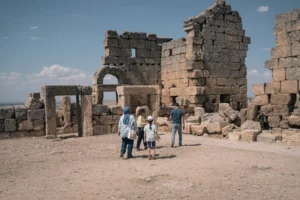 Archaeologists in Turkey have identified massive structures below a Roman-era castle
Archaeologists in Turkey have identified massive structures below a Roman-era castle
Date: September 1, 2023
Source: NPR
Summary:
Archaeologists in Turkey have unearthed significant structures beneath the Zerzevan Castle, a Roman-era military garrison. Utilizing ground-penetrating radar, they discovered multistory structures believed to have sheltered around 10,000 people during wartime. The site, rich with artifacts dating back to pre-Roman times, is shedding light on the region’s ancient history. Among the finds are a well-preserved Mithras Temple from 2017, and various residential complexes within the castle walls. Archaeologist Aytac Coskun anticipates that excavations, which have so far covered only about 10% of the area within the castle walls, could continue for another three decades, potentially altering the modern understanding of this part of the world’s archaeological and architectural history. Read more…
Los Saladares de Orihuela excavation site opened to the public
Date: 12 September 2023
Source: The Leader
Summary:
The Los Saladares archaeological site in Orihuela has entered its second phase of excavations, revealing more of its rich historical heritage. Councilor for Historical Heritage, Matías Ruiz, emphasized the site’s archaeological and natural wealth. Mayor Pepe Vegara expressed the importance of uncovering local origins and announced plans to continue collaboration with the University of Alicante for further research and public engagement. Once this excavation phase concludes, open days will be arranged for public visits. The site, dating from the 9th to 3rd centuries BC, is crucial for understanding the Iberian culture’s origins. The current focus is on consolidating a large ancient Iberian building and excavating foundational structures to ascertain its initial chronology. Read more…
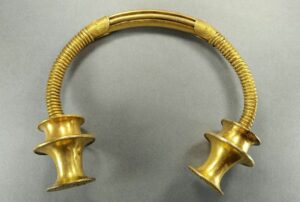 Spanish water worker finds ancient gold necklaces on hillside
Spanish water worker finds ancient gold necklaces on hillside
Date: September 13, 2023
Source: CNN
Summary:
In a serendipitous discovery, a local water company worker, Sergio Marciandi, found two gold necklaces dating back around 2,500 years in Cavandi, Asturias, Spain. Upon discovering the first necklace among rocks on August 29, Marciandi alerted Pablo Arias, a prehistoric archaeology professor at the University of Cantabria. Subsequent investigation by Arias and the Asturias Archaeological Museum experts revealed a second broken necklace. This find, deemed “quite exceptional” by Arias, could significantly enhance the understanding of the Iron Age, as the intact site provides precise contextual information, unlike previous finds from the 18th and 19th centuries. The necklaces, showing signs of wear, were likely owned by society’s upper echelons, opening new avenues for studying this historical period. Read more…
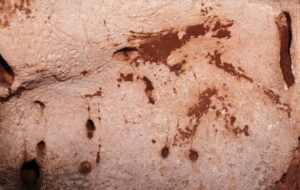 Cave art dating back 24,000 years discovered in Spain
Cave art dating back 24,000 years discovered in Spain
Date: 13 September 2023
Source: The Irish News
Summary:
Archaeologists from the UK have uncovered a significant palaeolithic cave art site on Spain’s east coast, revealing over 100 ancient paintings and engravings estimated to be at least 24,000 years old. The site, located in the Cova Dones cave near Valencia, was discovered by researchers affiliated with the universities of Zaragoza, Alicante, and Southampton. The artworks depict various animals including horses, deer, and wild bulls. Despite the cave being known to locals and hikers, the paintings remained undiscovered until now. The discovery, initially made in June 2021, is considered the most significant palaeolithic cave art site found in the region, and one of the most important in Europe since 2015. The unique use of clay in creating these artworks and the preservation conditions within the cave have allowed for an exceptional level of detail to be maintained, offering a rare glimpse into the artistic expressions of ancient populations. Read more…

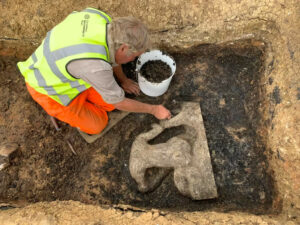 Roman statue of Greek sea god Triton discovered during excavations
Roman statue of Greek sea god Triton discovered during excavations
Date: 14 September 2023
Source: ITV News
Summary:
A remarkable Roman statue of Triton, the Greek sea god, has been unearthed during archaeological excavations in Teynham, Kent. The discovery occurred amid investigations for a new housing development near the A2 London Road. The statue has been meticulously extracted for initial conservation, revealing its intricate details. Dr. Richard Hobbs from The British Museum highlighted the statue’s significance in understanding Roman Britain’s connection to the broader Roman Empire. The site also revealed a Roman mausoleum, Roman cremation burials, and a coin dating back to circa 320 to 330 AD. The excavations, led by Canterbury Archaeological Trust since late May 2023, have surpassed expectations, unveiling a part of Teynham’s rich Roman legacy. The findings are anticipated to significantly contribute to the comprehension of the Roman landscape in the region. Read more…
Researchers unearth “buried secrets” of Spanish warship that sank in 1810, killing hundreds
Date: September 15, 2023
Source: CBS News
Summary:
An ongoing investigation into the Spanish Navy frigate, Santa María Magdalena, which sank during a storm in 1810, has unveiled “buried secrets” including well-preserved structural details. The Spanish Federation of Underwater Activities has been spearheading this “exciting investigation” which initially aimed at preserving the ship but has now evolved into a series of astonishing discoveries. The ship, being the only wreck of its time currently being excavated in Spain, was part of a Spanish-British collaboration during Spain’s War of Independence. The tragic sinking event led to the death of an estimated 500 sailors and soldiers, with only eight men surviving the ordeal. The excavation has revealed around 86 square feet of undamaged lining boards along the frigate’s bilge, showcasing an exceptional state of conservation. The discoveries, including ballasts and ammunition, are providing a deep dive into Spain’s naval history, paying tribute to the brave individuals who navigated treacherous waters over two centuries ago. Read more…
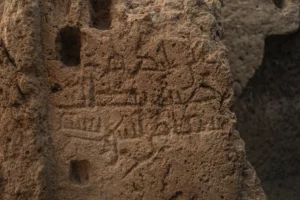 ‘Remarkable’: Early medieval ‘Govan Warrior’ stone discovered during church fun day
‘Remarkable’: Early medieval ‘Govan Warrior’ stone discovered during church fun day
Date: 18 September 2023
Source: The Herald
Summary:
A “remarkable” early medieval stone, dubbed the ‘Govan Warrior,’ has been unearthed during an archaeological dig at Govan Old Parish Church in Glasgow. The discovery, led by Professor Stephen Driscoll from the University of Glasgow and Clyde Archaeology, occurred during a community fun day. The stone, portraying a warrior with a round shield and a shaft, is unique compared to other artifacts at the site known for its Viking-age sculpture. The ‘Govan Warrior’ stone, with its stylistic characteristics, draws parallels with Pictish art and carvings from the Isle of Man, offering a fresh perspective on the region’s ancient artistry. The discovery, part of the Glasgow Doors Open Days Festival, engaged the local community, with over 500 visitors and dozens of volunteers participating alongside archaeology students. This find, enriching the existing collection at Govan Old, which houses over 30 sculptures from the Viking-age Kingdom of Strathclyde, is hailed as a significant step in exploring the area’s early medieval history. Read more…
 Stonehenge tunnel plan ‘should not proceed’ says Unesco
Stonehenge tunnel plan ‘should not proceed’ says Unesco
Date: 19 September 2023
Source: BBC News
Summary:
UNESCO has urged the UK government to revise the proposed road tunnel plan near Stonehenge, warning that the World Heritage Site could be placed on the danger list if amendments are not made before the World Heritage Committee’s meeting in February 2024. The tunnel scheme on the A303, aimed at alleviating traffic congestion, was approved by the government in July. However, UNESCO, along with The Stonehenge Alliance and Save Stonehenge World Heritage Site, fears that the current plans could jeopardize Stonehenge’s World Heritage status. They argue that the proposed western portal and associated dual carriageway would adversely impact the site’s physical and visual integrity. Over 225,000 signatures from 147 countries have been collected in a petition urging the UK government to halt the “damaging” road scheme. Read more…
 New discoveries off Egyptian coast reveal ‘treasures and secrets’
New discoveries off Egyptian coast reveal ‘treasures and secrets’
Date: September 20, 2023
Source: CNN
Summary:
New archaeological findings have emerged from the site of a sunken temple off Egypt’s Mediterranean coast, as announced by the European Institute for Underwater Archaeology (IEASM). Led by French marine archaeologist Franck Goddio, the team explored the ancient port city of Thonis-Heracleion, particularly focusing on the temple dedicated to the god Amun. The temple, known for its historical significance where pharaohs received their titles, witnessed a catastrophic event around the mid-second century BC, causing massive stone blocks to collapse into the city’s south canal. The excavations revealed precious artifacts like silver ritual instruments, gold jewelry, and alabaster containers, showcasing the temple’s wealth and the city’s religious fervor. Additionally, well-preserved wooden structures dating back to the 5th century BC were uncovered. The discoveries also extended to a nearby Greek sanctuary dedicated to Aphrodite, highlighting the multicultural essence of Thonis-Heracleion during the Pharaohs’ reign of the Saïte dynasty (664 – 525 BC). These findings, enabled by advanced geophysical prospecting technologies, offer a rich glimpse into the ancient city’s religious, cultural, and architectural heritage. Read more…
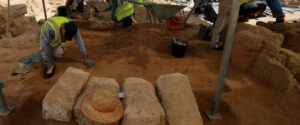 Largest cemetery ever discovered in Gaza and rare lead sarcophogi found
Largest cemetery ever discovered in Gaza and rare lead sarcophogi found
Date: September 24, 2023
Source: ABC News
Summary:
Palestinian workers, while working on an Egyptian-funded housing project near Jabaliya in the northern Gaza Strip, stumbled upon a Roman-era cemetery dating back around 2,000 years, marking the largest cemetery ever discovered in Gaza. The 2,700-square-meter site has since been excavated with the aid of French experts, revealing 135 graves, including two rare lead sarcophagi. The lead sarcophagi, adorned with ornate grape leaves and images of dolphins, are believed to house social elites of the time. The cemetery, likely situated near a city center as per Roman tradition, offers a treasure trove of information regarding the cultural and health aspects of the ancient population. The findings, including skeletons and fragments of clay jars, are expected to provide a deeper understanding of Gaza’s rich historical heritage, despite the challenges posed by the region’s political and urban development factors. The unearthed skeletons are slated for further analysis outside Gaza, with plans for their return to the Hamas-led Ministry of Antiquities and Tourism. Read more…
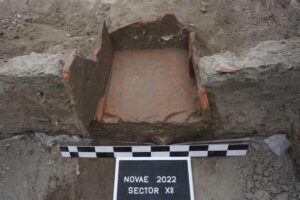 Archaeologists: Roman soldiers used this built-in fridge to keep their wine cool
Archaeologists: Roman soldiers used this built-in fridge to keep their wine cool
Date: 26 September 2023
Source: Ars Technica
Summary:
Archaeologists have unearthed a 2,000-year-old ceramic structure believed to be used for storing wine and perishable foods by Roman soldiers stationed in what is now northern Bulgaria along the Danube River. This discovery was made at the archaeological site of Novae, a former Roman legionary fortress. The ceramic “wine fridge” is the second of its kind found at this site, with the first discovered last year beneath a military barracks room’s floor. The latest find is notable for its additional cooling element – a lead pipe connected to a system of aqueducts running along one side. Fragments of wine glasses, bowls, and animal bones were also found, which could help recreate the soldiers’ last meal. The fortress at Novae played a significant role in fortifying the Roman Empire’s border against barbarian invasions, with the ceramic structure shedding light on the living conditions and lifestyle of Roman soldiers during that era. Read more…

